015 Up the Garden Path
Kat: Hello, and welcome to Genetics Unzipped - the Genetics Society podcast with me, Dr Kat Arney. In this episode we’re diving into the valley of hybridisation, visiting the Society’s medal-winning Mendel-based garden at the RHS Chelsea Flower Show. Plus, the importance of playing with your genes.
In the Valley of Hybridisation
At the end of May, the Royal Hospital in Chelsea, west London, was transformed into a wonderland of gardening delights for the Royal Horticultural Society’s annual Chelsea Flower Show.
This year, the Genetics Society was lucky enough to be accepted to present a very special garden celebrating the Society’s centenary year. It featured a luscious valley of snapdragons or antirrhinums, a giant DNA sculpture, live genome sequencing with a MinION device, and even a modern-day Mendel hard at work with his peas and pipettes.
Check out this photo gallery from the day:
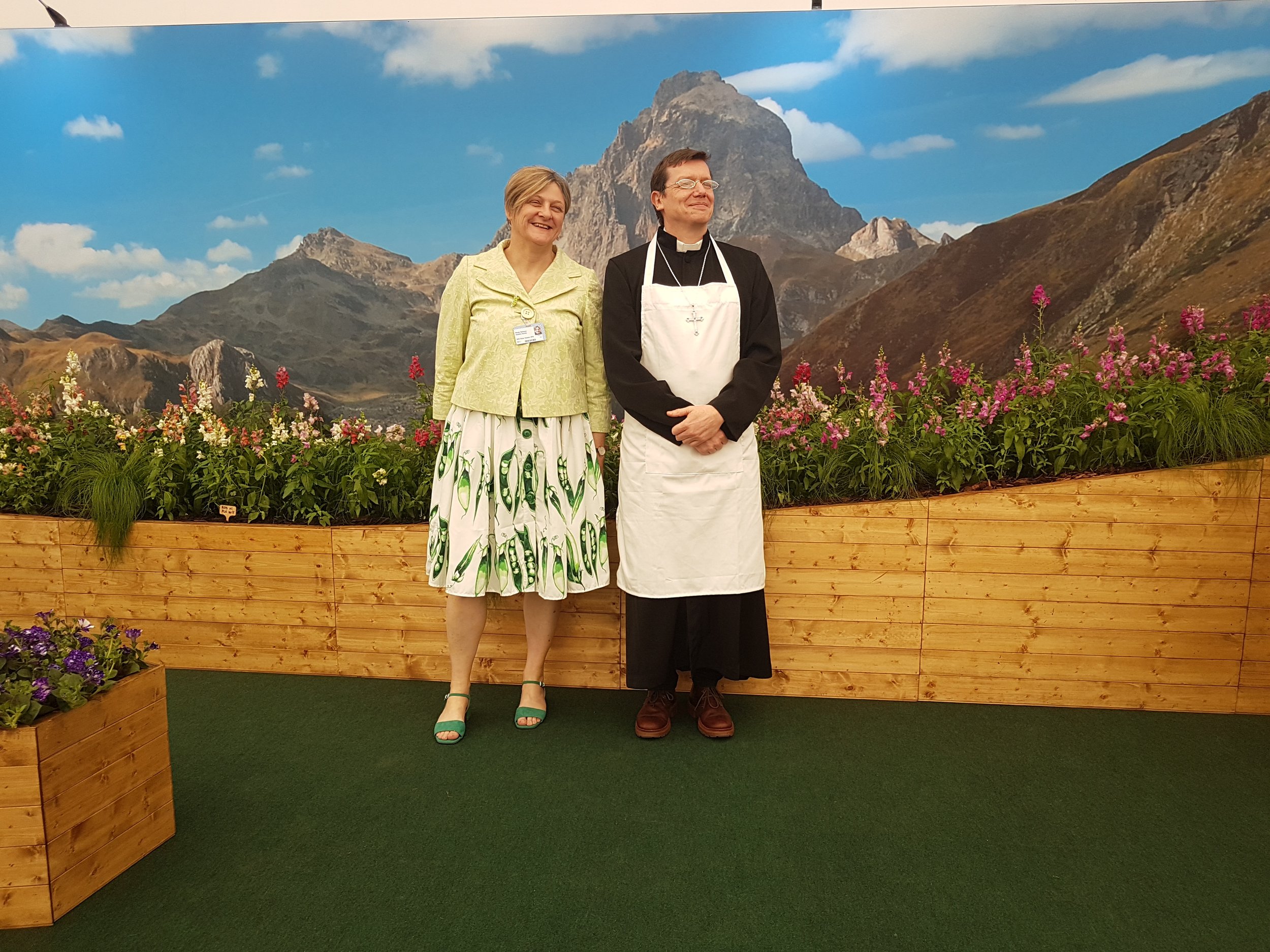
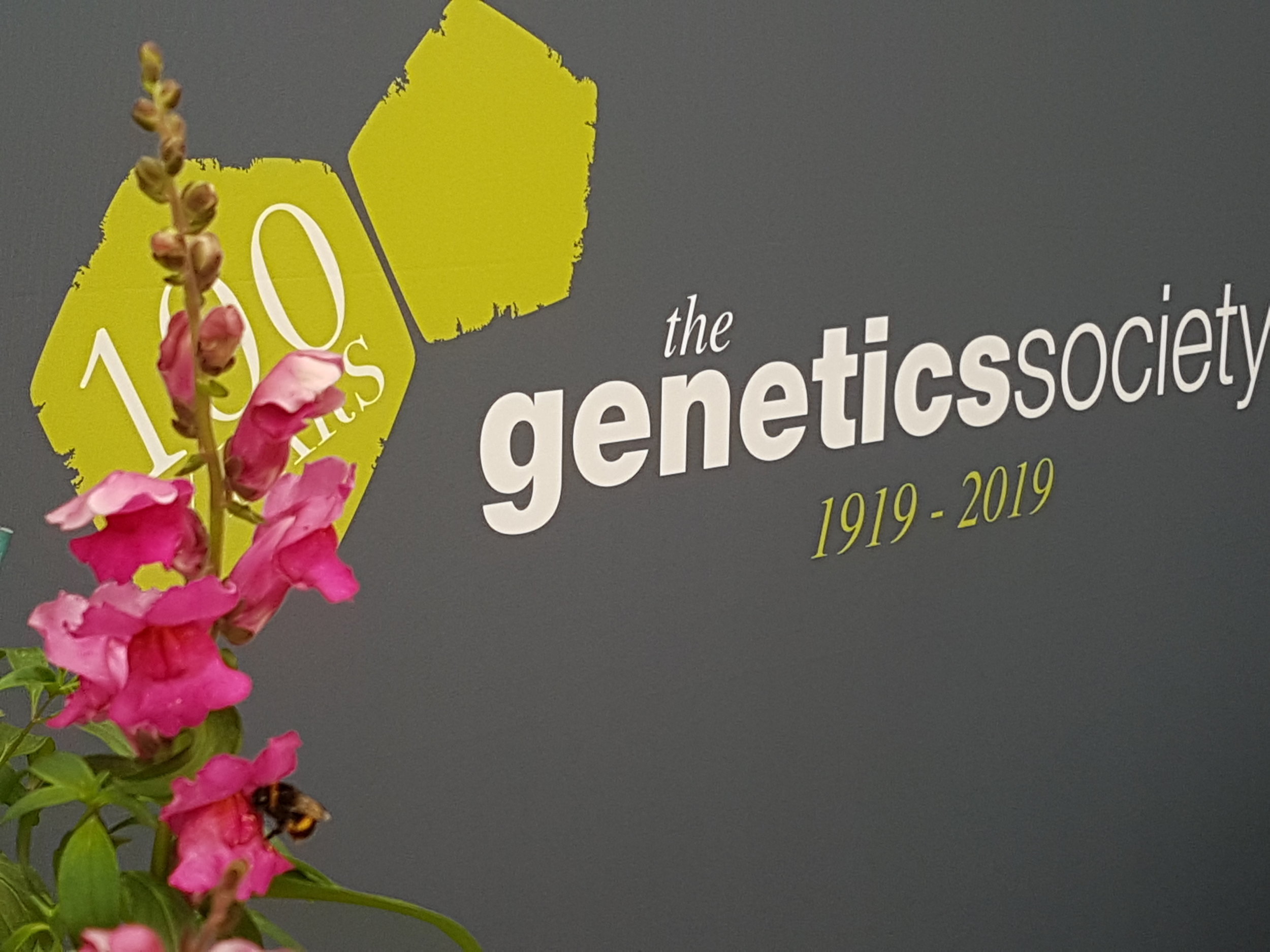

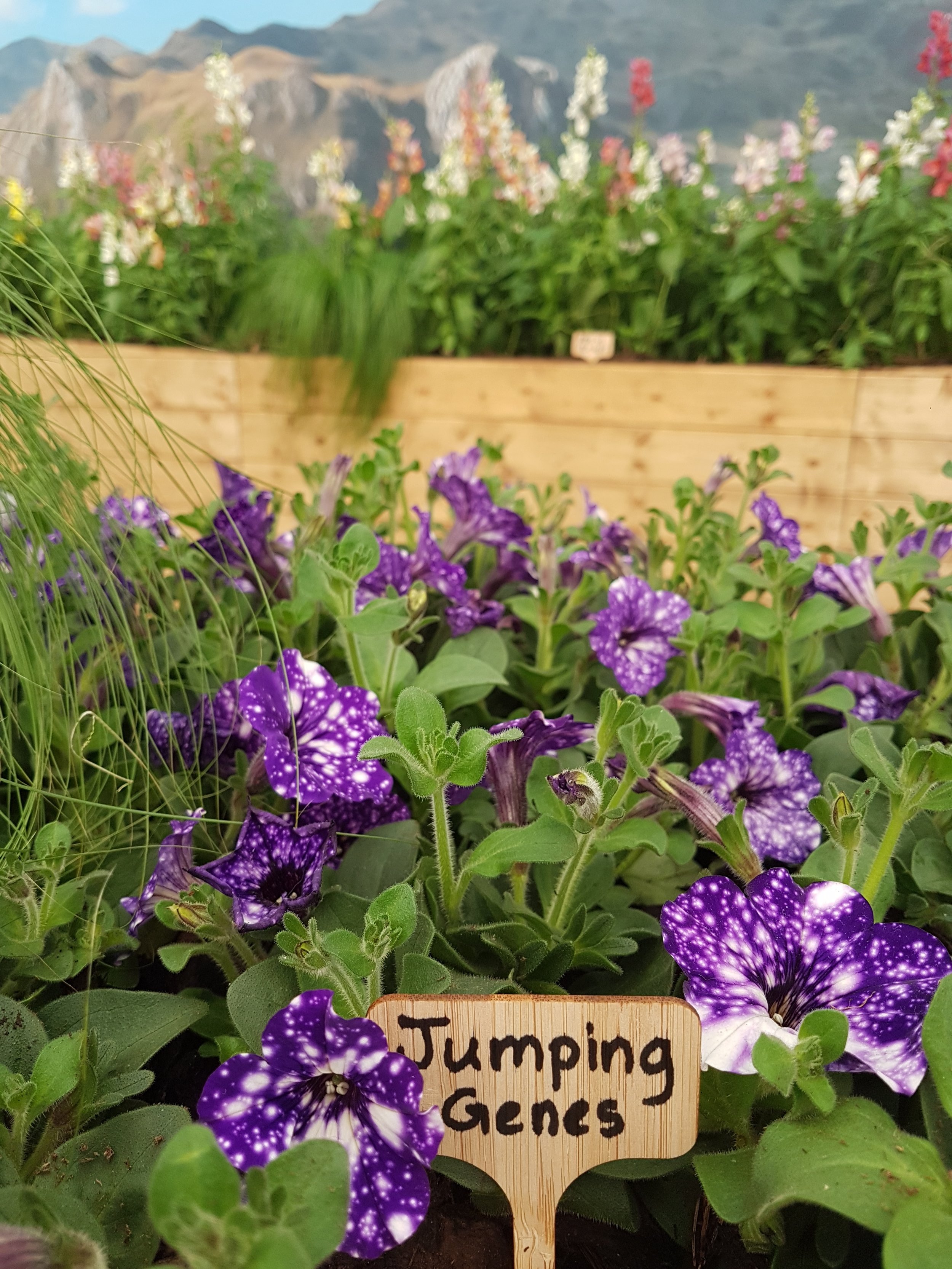
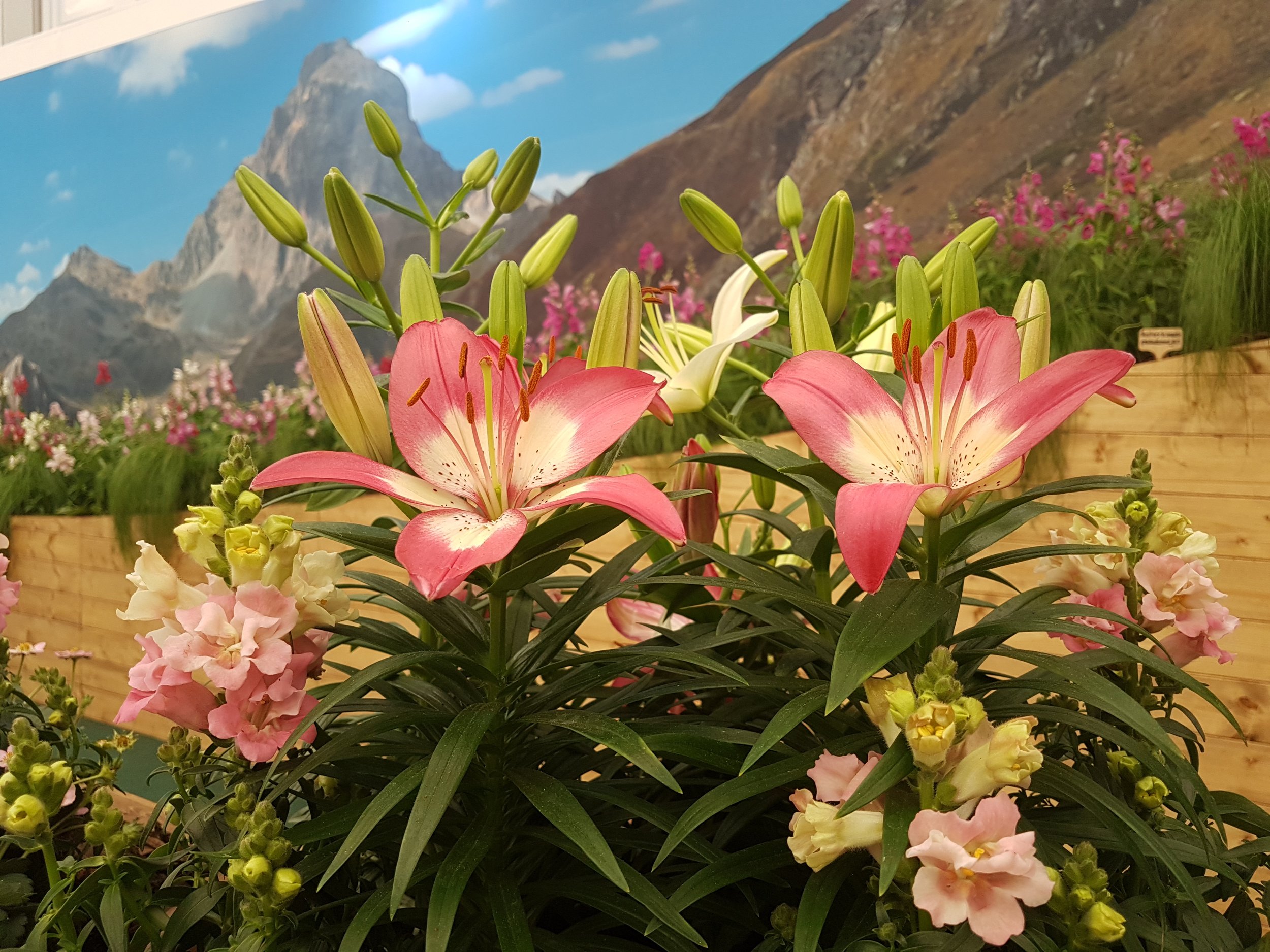
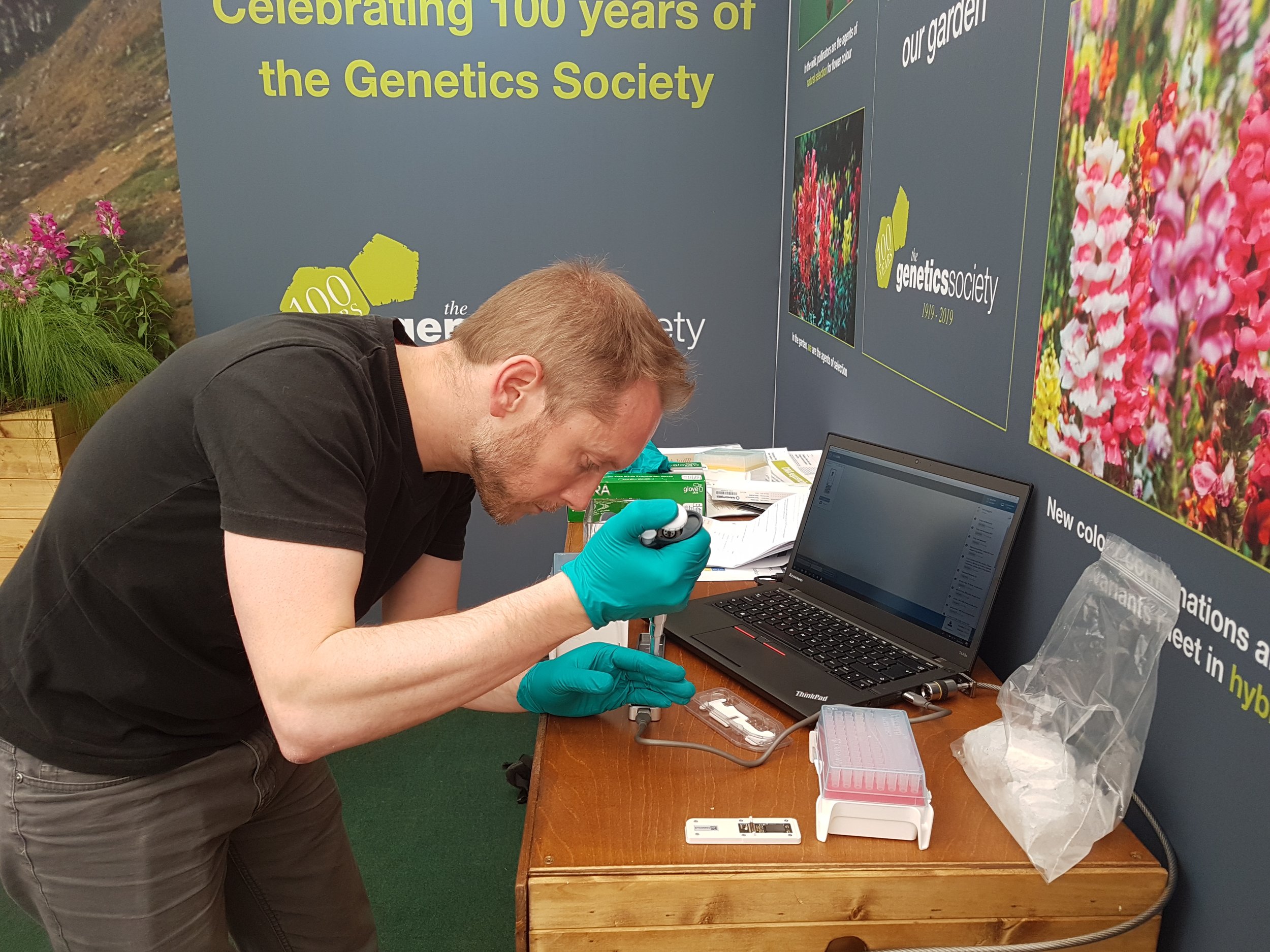
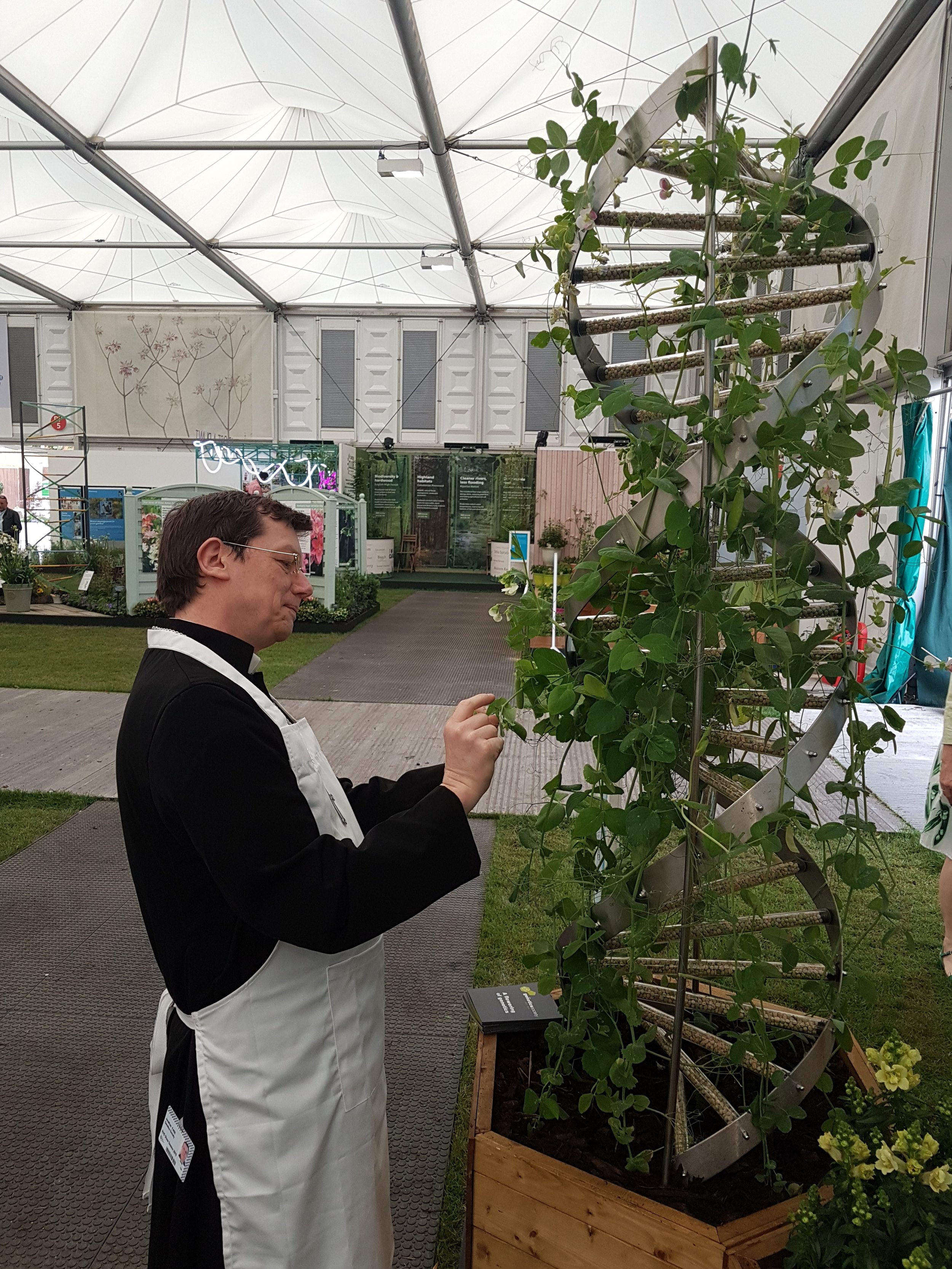
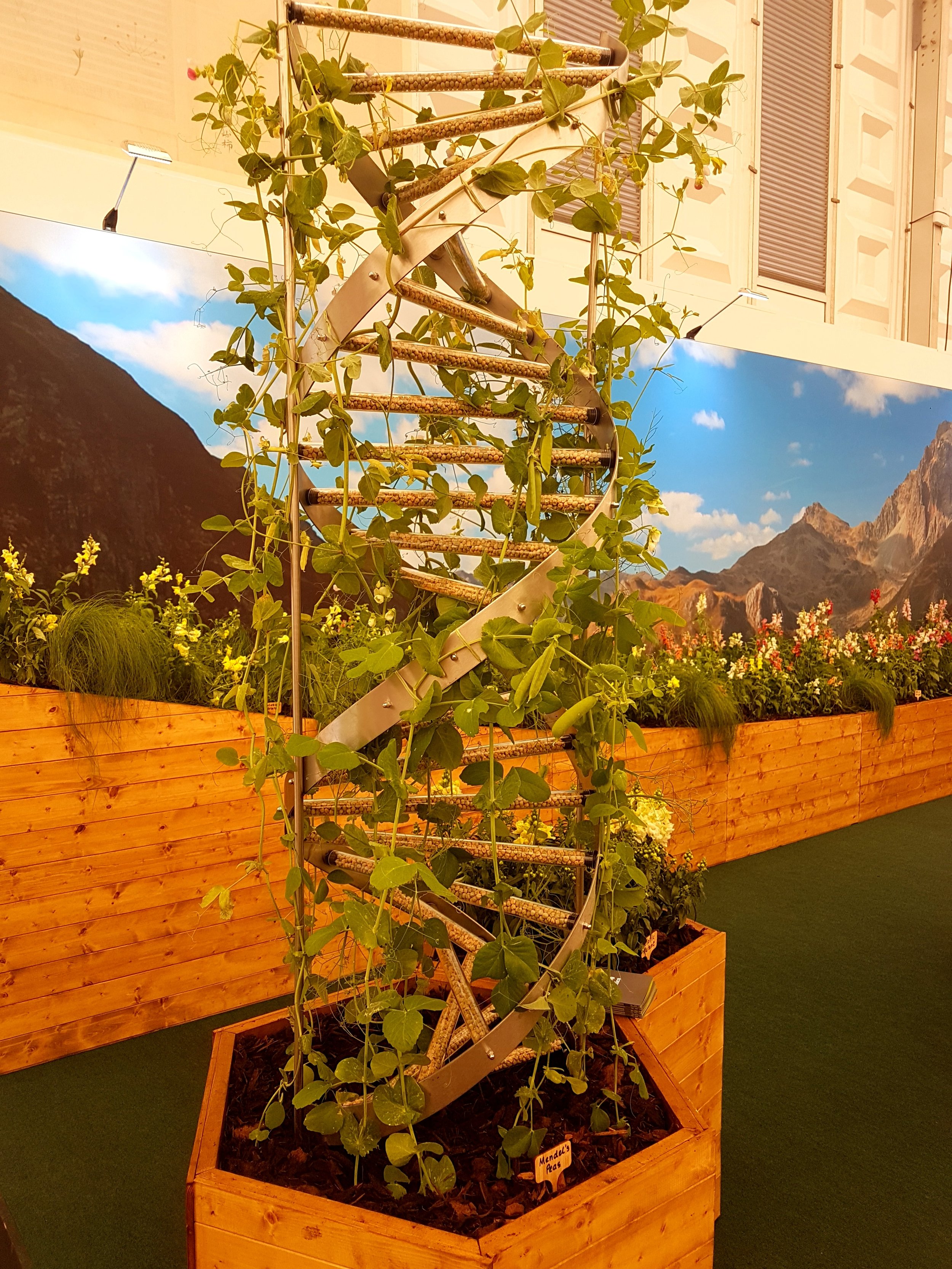
We sent our reporter Graihagh Jackson for a trip up the genetical garden path, to seek out the mastermind behind the project - Genetics Society past president Professor Wendy Bickmore - and find the science among the snapdragons.
Wendy: We are at the RHS Chelsea Flower Show and we're here because I had this crazy idea that an interesting way to celebrate the centenary of the Genetics Society, which is this year, 2019, would be to come to a flower show and talk about flower genetics to the public.
Graihagh: Why? What's the connection to the Genetics Society?
Wendy: So, the founder of the Genetics Society, William Bateson was a plant geneticist. He used plants to try and understand the basis of flower colour. And antirrhinum is one of the flowers that he worked on.
Bateson was an interesting character because he was the person that really re-popularised Mendel's work on peas. It was actually while he was at an RHS conference, I think, that he was introduced to Mendel's writings. He popularised it in the English language. He was the first person to coin the word genetics, in fact. So there seemed to be also a relationship to the RHS of course, who run the Chelsea Flower Show.
Graihagh: I know this is something that Kat has touched on a lot in the past before, but just briefly; who was Mendel and what did he do with peas?
Wendy: So, Mendel was a friar, in fact, the abbot of a monastery in Brno in the Czech Republic, and he was interested in variety in both animals and plants. Of course, he's famous for studying peas which we've got on our stand here. We've got some of Mendel's peas.
He was studying both the shape and colour of the seeds, whether they were smooth or wrinkly, but also flower colour. A lot of people don’t realise he was interested in pea colour.
We've a beautiful sculpture, a double helix here, made for us by the John Innes Institute, and we've got the different colours of the pea there.
Graihagh: It's quite interesting that Bateson chose to present this work to the Royal Horticultural Society. Does that say something about the interplay between genetics and plants at the time? Does it say something about the era?
Wendy: I think it did. Botany and plant sciences were very prominent then, in the whole scientific community – probably much more so than now. And the RHS was really a very important organisation for promoting science and natural sciences in general.
Graihagh: I should say that what's in front of us is pretty spectacular. It's recreating the landscape of the Pyrenees. So you've got the Pyrenees in the backdrop, a photo of them, and then you've got this selection of flowers that are supposed to be going from one hill to another with a valley in the middle.
What happens is on one side you have magenta, pink flowers and on the other side you have very pale yellow. Where they meet in the middle, in the valley, you've got a right odd collection of colours, even on the same plant.
There might be some white ones, there's some peachy ones and then some of them are even pink with yellow on. So it's a real odds and sods collection of colours and flowers. Tell me a bit about this, what's the thought process behind?
Wendy: When we'd decided that we would come to the Chelsea Flower Show, the next thing was we had to decide what to do. None of us are professional plant growers, so our first ideas were that maybe we could build a greenhouse and call it Mendel's Glasshouse, and we'd do displays of peas and maybe some punnet squares and a few other things.
Then that all seemed to be a bit too complicated. I was listening to a public lecture, the Haldane Lecture given by Enrico Coen – another past president of the Society - who works on antirrhinums in Norwich at the John Innes. He was talking about his work on antirrhinums in the wild, which he's been studying for many years. He presented his work on what's called a hybrid zone.
That's what we tried to recreate here and we love the beautiful simplicity of it. It's very visually striking. What it is, it's showing how genetic variance spreads across the geography of the hills in the Pyrenees, directed by the way the bees pollinate different genotypes. They have a preference for the yellow flowers and the genotype that makes the yellow pigmentation, or the magenta end of the spectrum.
Where those two subspecies of antirrhinums meet in the wild, they hybridise. Therefore the new genetic diversity created by that creates all the intermediate colours of the flowers. But they don't spread in the wild because the bees don't particularly like them. The bees have a preference for the magentas and the yellow, so the bees are acting as the agents of selection in the wild to create mainly the pinks and yellows.
I thought here in a flower show full of gardeners, gardeners are acting as agents of selection for what will grow. Probably not many people who come to a flower show ever think about that, the way that they are interacting with the genetics of the flowers they are looking at.
After all, almost everything that is growing in this tent is a mutant of some variety that's been selected by a flower breeder. So that's how we originally got to centring everything on the hybrid zone and using that seems to be a very tangible way to introduce people to the concepts of genetic variation.
A lot of people who've come past the stand are very comfortable with the idea of hybrids, because a lot of the plants that grow in their gardens are hybrids, but they've never really thought about it in the wild before as a natural phenomenon.
Graihagh: And how much do we know about what's going on at a genetic level?
Wendy: I'm a human geneticist and not a plant geneticist, so I'm going to defer to my colleague Greg Mellers, who is based at the National Institute of Agricultural Botany. He's a practising plant geneticist, so he will be able to give you the scientific details of what's happening in this lovely hybrid zone behind us.
Graihagh: Great, so I've just been talking to Wendy about the underlying thought process behind what we have here. We have these - she gave them a Latin name, what was the Latin name for these flowers?
Greg: Antirrhinum pseudomajus.
Graihagh: Wow, that's a mouthful, snapdragons for short.
Greg: Snapdragons, yes.
Graihagh: In common everyday language. They're these beautiful flowers, they are a bit like hollyhocks or foxgloves in that they grow up in one stem and then there's lots of flowers that sort of circle around it. They look a bit orchid-y. They're quite bulbous and mouthy, if that's the right way to describe a flower.
Greg: I'm not sure we'd say mouthy, necessarily. I actually don't know how you would describe them. They're very pea-like, or bean-like in the structure of the flower. It's very characteristic of a bean or a pea flower, a legume flower that you might necessarily see out in your garden or out in your allotment.
The important thing about these is actually how pollinators interact with them. One of the things that we're trying to show with this display here is trying to understand how pollinators are interested in colour, and how they interact with different floral colours that exist within this wild and natural population that we've got on display here.
Graihagh: So they start at magenta, purply-pink at one end and then they slowly transition to yellow at the other end of the valley, the fake valley. In the middle you've got a mixture, a right hodgepodge of white, some are pink, some are yellow and that's all on the same branch, actually. So do we know what's going on to cause that change?
Greg: So, we're starting to have some ideas of exactly how this process works. At either end of this spectrum, the magenta end and the yellow end, we have two very well established and independent species. These two well established species are consistently reoccurring in the same locations, in the same position. What happens in between these two is hybridisation.
Generally, what happens is that the pollen from one of these populations is spread along this transect, along this gradient between the two populations. That's how we end up with this mix in the middle.
What's really interesting about this is that that central hybridisation region doesn't necessarily persist from year to year because every time you get a different combination of these two independent populations.
We're starting to understand how this occurs by making crosses between each of these different populations.
What we can do with these independent crosses is try and look at the characteristics of the flowers and use that to inform us as to what genes have changed that underly that phenotype or that characteristic.
Graihagh: And what's the outcome of that? Is it just colour that changes?
Greg: The entire genetics that underly these different populations will be completely changed by this process of hybridisation.
Any gardeners out there will be familiar with this idea of F1 hybrids. It's exactly the same process, when we think about hybrids in the natural sense. What we're finding is that we've taken these independently segregated populations genetically, that then come to meet.
So what happens in those central hybrid regions is you get what's called hybrid vigour. This hybrid vigour is actually where you see an increase in the fitness. This is why it's so attractive to gardeners to have these F1 hybrids, because they generally produce more flowers and therefore, more fruit; in that hybridisation region in the wild sense, but in your glasshouse or your greenhouse at home, when you're trying to grow tomatoes and cucumbers for your kitchen.
Graihagh: And do we know what's going on at a genetics level here, to cause some of the changes in colour, and is it just colour that's changing? Is there more than meets the eye?
Greg: What you effectively end up with is not just a mix of colour that exists between these populations, but you also start to change the cues to a pollinator that exist within the flower. Remember, if you look at an antirrhinum or you look at any given flower, there isn't necessarily just a single colour - flowers would be generally quite boring if you just had this single colour.
Often what you'll find is that you have some sort of cue that almost looks like a landing strip going into an airport, for the pollinator to come and land inside this flower.
If you actually look down and try and look in this flower…
Graihagh: Yeah.
Greg: If you imagine I was bee flying along, coming into this flower, what you will find is that the bee is actually attracted to this central portion, because these yellow landing strips actually act like a highlight to say, "Come inside, come here, this is where the nectar is."
Graihagh: So it's about the contrast. The whole flower is white and then there are these three yellow lines that direct it into where the pollen is?
Greg: Precisely, yes, exactly. So these yellow lines that are directing the bee or the general pollinator inside are actually trying to say, "This is where the nectar is", or, "This is where the pollen is."
So what's interesting partially about antirrhinum is that you can see that the structure is actually quite closed. The flower, if you look at an antirrhinum, it's very compact and very closed together. What a bee has to do is to push these things apart. It needs some sort of cue, some sort of indication as to where to start to apply the pressure and where to start to actually enter into this antirrhinum.
So what the bee will do is press down to open this flower, and then it can head inside the flower, following these landing strip lines, and head all the way down to the nectar, which is what it wants at the end of the day, really.
Graihagh: It's quite a lot of work for the bee, isn't it, or the pollinator?
Greg: It is, it's an awful lot of work for the bee. What's interesting about this mix and this central hybridisation region is that because there's such a generic mix of these colours and these landing strips and all of the indications for a pollinator to actually come inside, that then becomes slightly problematic.
When a pollinator is looking, it has what we call a search image in its mind. It has some sort of idea of the flower that it knows is currently producing nectar at that time of day. Because I think as a lot of people now know, when bees return to the hive, they actually do what we call a waggle dance. So the bees are telling the other bees in the hive where there is food and resources currently available.
The problem becomes when we have such a massive mix of these different colours and these different landing signals. It's very difficult for the bee to actually form a characteristic and conceptual search image of what this mixture of crazy colours actually looks like. So in fact, what we find is that the pollination is significantly affected across this hybridisation region.
Graihagh: So is it like an evolutionary dead end, in that the pattern is so confusing to these bees that they can't communicate it with their waggle dance to the other bees, and therefore they don't get pollinated, so they die out with each season?
Greg: Yes, in some ways. It's actually a really interesting question because this kind of thing is where we're at now when it comes to genetics. We've reached the point with genetics now, where we can actually start to understand; how do species begin to form? We can watch events like this, where we're seeing a hybridisation event occur, to try and understand; what is speciation?
You have to remember that this idea of a species is slightly arbitrary, in the sense that scientists at some point decided this is the characteristics that we'd say was a species, and that's kind of where we've gone from there. In some ways, it's slightly arrogant to say that we think this is a species.
We're actually reaching a point where we should really be able to start to answer that question. Specifically, within this population it’s very difficult to tell, because it needs there to be some characteristic of the central population, of these individuals that exist within the middle of that population, that allow them to be pollinated and continue to persist in that environment.
Even if these things do actually end up hybridising within the hybridisation zone itself, can you actually start to consider that a species? So I was saying earlier about this slight human arrogance of trying to put categories and labels onto species and trying to put everything into neat little boxes. And this population is really a great example of how we probably shouldn't really be doing that anymore.
We probably know enough about genetics now to know that this kind of hybridisation, in a natural sense, is occurring all over the place. It's not just happening in the Pyrenees, it's probably happening in every given environment you can possibly think of.
So, it's a really good question about evolution and speciation because it starts to break down these ideas of what is a species, you know?
Graihagh: And when does one species become another species?
Greg: Exactly. Who makes that decision? I mean, biologists for years have been like, this is one and this is another. Now that we can actually start to sequence things and we can look at the genomes of these populations, it really allows us to have a better understanding of; genetically, how distinct are these things? So we can start to use the genetics that we're now able to achieve in order to be able to make these segregations.
But still, when you actually start to go out in the wilds and you look at these natural populations - meh, it's kind of all just a big mix of things, you know? They've all just evolved from one another and will continue to evolve when we're gone. So it's nice and it's interesting to see biologists come along and try and put things into categories and put things into little drawers, and we can do that even more so now that we've got genetics.
But it should be that we reach a point now where we can make a frame shift. We can actually get away from all of this and start to say; what is biodiversity? And try and get away from counting species, I hope.
Kat: No more botanical boxes… that’s the message from Greg Mellers from NIAB, the National Institute of Agricultural Botany in Cambridge.
Before Graihagh went off to lose herself in the hybridisation valley, she had one final question for Wendy Bickmore.
Graihagh: I know this was your brainchild, is it how you hoped it would be?
Wendy: Yes, I'm really pleased. It was so nerve-wracking putting it together, because we thought; can we pull it off? Because the thing about Chelsea is that people expect something of a quite high standard, so we were very reliant on the plants looking good and everything. I'm really pleased, I think it's been a great success and we even won a silver medal, which I'm so chuffed about.
Graihagh: Congratulations, Wendy!
Wendy: Yes, so that's going in the Genetics Society archive as a really unique contribution.
Graihagh: And what sort of reaction have you had from members of the public? We're on - what, day four now, that you've been open?
Wendy: Yes, I've lost track of the days, it's been a long week. It's been very, very interesting. Almost every day has been different. On Monday when the show opened, it was private viewing for the other exhibitors and the professional plant breeders. We had really interesting conversations with the plant breeders in particular, who were very interested in, for example, variegation, because that's very important for tulips, some of the roses.
People would actually come up and say, "Where can I get my tulips sequenced?", to which I don't have an answer, but I understand that perhaps the Earlham Institute is somewhere they can go to do that.
So people have some interest now in bringing a little bit of genetics into flower breeding. I think it's astonishing from a working scientist's point of view, that most plant breeding hasn't changed over decades, hundreds of years. It's still done by crossing and keeping your fingers crossed and hoping that something interesting will come out of it.
But I would like to think that in ten years' time, if you came back here, we'd know the sequence of a lot of these flowers and these flower varieties.
Graihagh: Especially now, since the cost of sequencing has come down so much.
Wendy: Yes, it plummets. And in fact, one of the things we've got on the stand here is a MinION, a nanopore. We're actually sequencing a new variety of antirrhinum which is a variegated form. We're trying to find what the transposon is and where it's jumped into. So we're actually doing a little bit of science on the stand as well. We hope to have a scientific publication that comes out of this exhibit.
Kat: A silver medal and a scientific paper - you can’t hope for much more than that! That was Graihagh Jackson speaking with Professor Wendy Bickmore from the Human Genetics Unit in Edinburgh.
The Genetics Society’s centenary garden came to life thanks to the tireless efforts of a team including centenary project manager Cristina Fonseca, Professors Wendy Bickmore and Martin Taylor from the MRC Human Genetics Unit in Edinburgh, Jonathan Pettit from Aberdeen University of Aberdeen - who nobly spent the week dressed up as Mendel - and colleagues at the John Innes Centre in Norwich and the National Institute for Agricultural Botany.
Playing with your genes
In case you’d missed me banging on about it, 2019 is the Genetics Society’s centenary year. Another part of the celebrations is a special edition of the society’s scientific journal, Heredity.
It’s a collection of opinion pieces by the society’s past presidents and the current president, Professor Laurence Hurst from the University of Bath, looking back over the impact of a hundred years of genetics and forward into the future - both good and bad.
In the latest episode of the Heredity podcast, Laurence talks to James Burgon about 100 years of bias in genetics and evolution, how he fell in love with the field, his thoughts on science education, and his hopes for a playful future.
Laurence: I just think it's just the most amazing time to be a geneticist. It doesn't take a big brain to work out that where we're going is into - and we're already there - is into a domain of massive data. So I think our interim step is going to be having good ideas about all of this data.
I would make an appeal also, I think, to what you might call an age of playful genetics, I guess. I think the joy of having really brilliant data like that at a relatively cheap and available price, is that we should be entering an age in which people can be really, really playful in the sorts of questions that they ask. Just go in and ask and have fun, and if it doesn't work out, well, so be it.
But I think there is a notion that you should just trust good, intelligent scientists to be playful, to go out and come up with interesting things.
Kat: You can hear the full interview in the latest Heredity podcast - just search for Heredity in your favourite podcast app, or follow this link.
That’s all for now. Next time we’ll be back with more stories from our series exploring 100 ideas in genetics.
You can find us on Twitter @geneticsunzip or email us at podcast@geneticsunzipped.com with any questions and feedback. Please do take a minute to subscribe on Apple Podcasts, or wherever you get your podcasts from, and it would be great if you could rate and review - and more importantly, please spread the word so more people can discover the show.
Genetics Unzipped is presented by me, Kat Arney, and produced by First Create the Media for the Genetics Society - one of the oldest learned societies in the world dedicated to supporting and promoting the research, teaching and application of genetics. You can find out more and apply to join at genetics.org.uk Our theme music was composed by Dan Pollard, and the logo was designed by James Mayall. Thanks to Hannah Varrall for production, thank you for listening, and until next time, goodbye.




